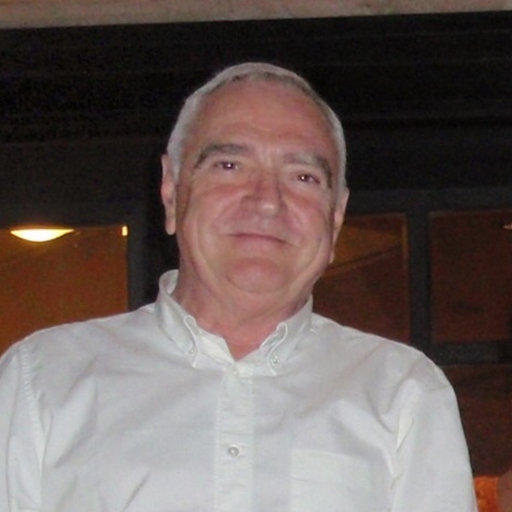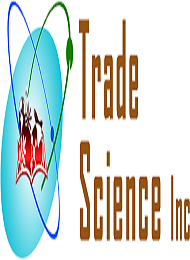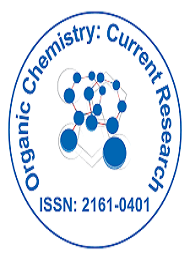Theme: Spreading the magic of Chemistry
INORGANIC CHEMISTRY 2023
- Welcome Message
- About Conference
- Session/Tracks
- Market Analysis
- Major Associations and Societies
- Past Conference Report
As a result of this subject, "Spreading the Magic of Chemistry" intends to provide a forum for international experimenters from diverse fields of logical chemistry, pharmacy, pharmacology, bioinformatics, and other life wisdom groups by offering a place for the critical evaluation of new evidence. The conference offers a venue for discussing the investigation workshop of logical toughness from many scientific backgrounds, and as a result, the same are frequently perceived by young experimenters and students. The conference's primary goal is to spread awareness of chemistry.
Benifits of Attending
The goal of Inorganic Chemistry 2023 is to bring together scientists, researchers, research scholars, and students to discuss all facets of organic and inorganic chemistry. Allow participants to interact with chemists, researchers, and research scholars to exchange ideas and build their networks. Signs of this gathering include incredibly well-known speakers who presented conclusive charts on the evolution of chemistry. The conference's main goal is to educate and raise awareness among medical experts, the chemical industry, and the general public around the world.
- Every accepted abstracts will be published in the respective relevant International Journals.
- Certificate Accreditation by International Organizing Committee Members(IOCM)
- Each abstract will receive a DOI provided by Cross Ref.
- Unique privileges on group registrations.
- Probability of B2B meeting
Target Audience
- Academicians
- Directors/CEO Managers/Engineers
- Researchers from universities
- Chemical Scientists from research institutes
- Chemical engineers
- Scholars/ laureates, Associations and Societies
- Business Entrepreneurs
- Training Institutes
- Experts
- Delegates
- Manufacturing Companies, Professionals
Analytical Chemistry is the scientific study for the composition and structure of the matter. It uses instruments and methods to separate, identify and quantify the matter. Their results or their solutions to the problems are used by various kinds of industries such as pharmaceuticals, for surety of quality of food and water, and compliance with environmental and other regulations etc.
- Mass Spectrometry
- Spectroscopic Methods Analytical
Electrochemistry deals with chemical reactions that produce the electric current and the changes associated with the passage through matter of electrical current. It is done through the oxidation or redox reaction i.e. movement of electrons
- Fundamentals of Electrochemistry
- Electrochemical cell
- Galvanic cell
3. Nanomaterial:
Working on the nanomaterial provides a scientific approach to the nanotechnology. Nanomaterial can be defined as the number of particle size must measure below 100 nanometers. Nano materials can occur naturally or can be created as the by-products of combustion reaction. These nanomaterials are too small for the naked eyes to see. The use of nanomaterial is spans across various industries such as healthcare, cosmetics etc.
- Organic Material
- Bio-material
- Soft-Material
Inorganic chemistry is the study of inorganic substances which are classified as catalysts, pigments, coating, surfactants, drugs, oils and more. It is concerned with inorganic compounds properties and their action. It involves rocks, minerals, coatings and organometallic compounds.
It is the brief analysis of the compounds which are produced or modulated by human nervous system. It is the purest branch of organic chemistry which involves study of neurochemicals such as oxytocin, serotonin, dopamine and other compounds which controls neurotransmitters. A clear awareness of neurochemistry is required to recognize certain neurological and cognitive conditions.
- Inhibitory neurotransmitter
- Serotonin
- Acetylcholine assists.
Radiochemistry is the study of chemistry of radioactive materials where radioactive agents are used to research the properties and chemical processes of non-radioactive isotopes; sometimes the absence of radioactivity also results in a sample being defined as inactive as isotopes are stable.
- Ligand
- Fluoride
- Positron
- Peptide
- Radionuclide
Physical chemistry is the sub-division of chemistry which involves the application of physics principles to determine the hypotheses to study the chemical properties and reactions between the materials. Physical chemist uses heavy machinery (laser, nuclear magnetic resonance and electron microscope etc.) for the reaction between the materials and analyses them by using physics laws and mathematical computations on the large data sets produced with those reactivity.
- Gas Chromatography
- Ionic Liquid
- pH
- Enumeration
- Ion
8. Polymer Chemistry and Technology
Polymer chemistry is a sub-division of chemistry that focuses on the chemical synthesis, structure and chemical and physical properties of polymers and macromolecules. In living organisms the enzymes, cellulose and nucleic acid are the example of polymers. They also form base of minerals such as stone, granite, etc. and products like concrete, steel, paper, plastics and rubber.
- Polymer Synthesis
- Polymer analysis
- Bio Polymers
It is a challenging field as it tie-up many scientific disciplines and allows for collaborations with other scientists in researching and developing the new drugs. Medicinal chemists apply their chemistry training and knowledge in synthesizing the new pharmaceuticals and their development processes. Medicinal chemists are concentrated on drug discovery as they are concerned with the isolation of medicinal agents from plants and development of synthetic drug compounds.
- Protein kinase Inhibitors
- Biophysical and Computational Tools
Forensic chemistry is applied science field where an individual apply his/her expertise to solve the crimes in the field of chemistry. There are various disciplines that an individual can adopt to solve the crime scenes. Some of the applications of forensic chemistry include spectroscopy, detection and separation methods to identify the illegal drugs and medicines.
- Molecular and atomic spectro-chemical technique
- Electrochemical techniques
- Sensors,
- Surface characterization techniques,
- Nuclear magnetic resonance
11. Heterocyclic and Macro cyclic Chemistry
Heterocyclic compounds are unsaturated derivatives and unstrained 5 and 6 membered ringed substances i.e. they are inorganic that contain at least one carbon. Macro cyclic ligand exhibits strong affinity for metal ions.
- Aliphatic Heterocyclic Compounds
- Aromatic compounds
12. Green Environmental Chemistry
Environmental chemistry studies the effect of the polluting chemicals on the nature while green chemistry focuses on the environmental impact of chemistry such as reducing consumption of non-renewable energy sources and technological ways to prevent pollution.
- Biofuels
- Chemical safety
- Environmental monitoring
- Ionic liquids
- Microwave chemistry
13. Facet of Organic Chemistry
Organic chemistry is the scientific discipline, to study the properties, structure and applications of organic molecules and compounds. Organic compounds are carbon based compounds i.e. compound composed of carbon and hydrogen atoms only.
- Structure and bonding
- Resonance and acid-base chemistry
- Alkanes, cycloalkanes, and functional groups
- Stereochemistry
14. Bio-organometallic Chemistry
Bio organometallic Chemistry is the discipline of science which studies the organometallic compounds in biological context. Organometallic compounds means enzymes or cofactors which possess one direct bond with metal carbon. This field is used in the development of new drugs.
- Medicinal Organochemistry
Computational Chemistry is the branch in which computational chemists studies the fundamental of atoms, molecules and chemical reactions using quantum mechanics and thermodynamics principles. It helps in understanding the world in better way as researcher uses their work to extract knowledge, manufacturer uses their design to develop more productive and efficient methods, etc.
- Bioanalytical sciences
- Chemical reactivity simulation
- D and f-element molecular magnetism modeling
- Density functional theory and EPR/ENDOR spectroscopy
16. Sonochemistry
High-energy ultrasound chemistry is the subject of the science known as sonochemistry. The fundamentals of sonochemistry and how to use it to create nanoparticles. Nowadays, sonochemistry is widely acknowledged as a method for creating nanomaterial. The numerous review articles that have been released over the past few years show this.
- Ultrasonic sonochemistry
- Sonication
- Bubble Cvitation
17. Radiochemistry
Radio-chemists must work safely and with the least amount of exposure possible when performing radiochemistry with high initial and quick decaying levels of carbon-11 or fluorine-18. Fluorine-18 PET radiochemistry has historically been seen as the domain of organic chemists. A co-ordinatively unsaturated aluminum complex is used as a high-affinity binding site for fluoride in a new innovative inorganic method for tagging proteins with 18F.
- Radioactive Isotope
- Neptunium
- Positrons
- Tomography
- Actinide
Organometallic chemistry is the study of organometallic compounds, which are substances that contain at least one chemical bond between a carbon atom from an organic molecule and a metal. These substances include alkali, alkaline earth, and transition metals, as well as metalloids like boron, silicon, and selenium.
- Metal-Ligand Co-operatively
- Iridium Catalysts for Organic Reactions
- New Directions in the Modeling of Organometallic Reactions
- Nanoparticles in Catalysis
In natural waterways, complex formation is a key chemical process that modifies metal species in solution by reducing free ion activity and altering solubility, mobility, and toxicity. Ion exchange, sorption, and weathering are actually ligand exchange reactions, and surface chemistry can also be understood in terms of coordination chemistry.
- Coordination Entity
- Central Atoms and Central Ions
- Ligands
- Coordination Number
- Coordination Sphere
A branch of science called bioinorganic chemistry studies how metals function in living things. The study of both naturally occurring phenomena, such as the behavior of metalloproteinase, and synthetically added metals, including those that are non-essential, in medicine and toxicity is referred to as bioinorganic chemistry.
- Metal ion transport and storage
- Enzymology
- Toxicity
- Oxygen transport and activation proteins
- Metals in Medicine
21. Food Chemistry
There is a plentiful supply of food, much of it is processed, and chemical additives are frequently used. In these privileged areas, issues with food primarily centre on price, quality, variety, and convenience, as well as how processing and chemical additions affect food's wholesomeness and nutritional worth. Food science is a field of study that deals with the physical, chemical, and biological characteristics of food in relation to stability, cost, quality, processing, safety, nutritional value, wholesomeness, and convenience.
- Carbohydrates Structure
- Lipids Structure
- Structure of Protein
22. Microfluidics
A wide range of fields, including biological investigation and chemical synthesis as well as optics and information technology, now have new capabilities thanks to microfluidics, which has recently brought continuous flow technology remarkable precision.
- Nanoparticle
- Biosensor
- Droplet
- Hydrogel
The market for activated carbon in Europe is anticipated to expand between 2020 and 2025 at a CAGR of 4.5%.
The presence of air pollution on the European continent and the constitution's provisions for reducing airborne mercury levels are the key determinants of this investigation. Additionally, it has been noted that silica gel alternatives and other innovations pose the biggest dangers to the market's expansion.
Increase in the demand of gas purification leads to increase in demand for activated carbon.
- Activated carbons are actively used in this procedure.
- The hydrogen sulphide, hydrogen, and mercury content of the gases are removed using this method.
- In addition to being utilised for food preservation, activated carbon is also used to purify carbon dioxide and amine solutions in natural gas.
- Russia intends to boost its LNG production to 73.2 MT by 2025 from 27 million metric tonnes in 2019, which will enhance demand for activated carbon pellets or coarse granular activated carbon.
- The European Union intends to utilise activated carbon in its ambition to ten-fold the production of biogas by 2030.
By 2022, the chemicals market is projected to reach a value of $4216.55 billion, growing at a predicted pace of 5.4% CAGR. By 2030, it is expected that organic chemistry would account for 51% of worldwide market share, with Asia, the Pacific, Europe, and North America holding the top positions. Within the last five years, the industry has grown by about 10%.
Inorganic and organic chemicals, polymers, esters, acids, surfactants, alcohols, dyes, bases, oils, alkalis, neutral gases, petrochemicals, ceramics, elastomers, process gases, and source gases are among the key industrial and significant chemical product categories.
According to the 2019 Sales Report, BASF is the largest chemical company, earning $66.4 billion in revenue, followed by China Petroleum & Chemical Corporation ($60.9 billion) and Dow Chemical Corporation, a US company, which earned $42.9 billion.
The Asia-Pacific (APAC) region dominates the world market for mining chemicals. Since countries in the APAC area not only have a large prevalence of mining operations, but they also have hospitable regulatory conditions, this region accounts for more than 50% of the regional market share. The global market for flow chemistry, which was estimated to be worth 808.6 million USD in 2013 and is expected to reach 1,526.3 million USD in 2020, is expected to grow at a CAGR of 9.5% from 2014 to 2020. The compound business, which supplies current goods, materials, and specialist arrangements over the European economy, is essential to financial improvement and wealth building. With 1.2 million employees with 2015 offers of €519 billion, it is one of the largest modern divisions and a major source of direct and indirect work in several fields. According to the European Chemical Industry Council (CEFIC), compound yield increased by a negligible 0.4% year over year in the European Union in 2016. For the year, concoction costs decreased 3.6%. Compound agreements fell 3% in the first eleven months of 2016 because to lower evaluating and little yield growth. Concoction yield is expected to quietly increase by roughly 0.5% in 2017, according to CEFIC. Global substance production (excluding medicines) is predicted to grow by 3.4% annually in 2017, at the same pace as 2016 (+3.4%). In the accelerated economies, we anticipate a little higher extension rate (2016: +0.9%, 2017: +1.1%). The rate of growth in developing markets will reportedly slow somewhat (2016: +5.4%, 2017: +5.1%). The improvements in China, which account for more than 33% of global production, will have a significant influence on the synthetic market's rate of global growth.
There, the growing trend may continue to slow down, but Chinese manufacturers are still expected to contribute more than two rate points to the growth of the entire concoction sector.
Trends in the Chemical Industry Today: Inorganic and organic chemicals, ceramics, polymers, elastomers, surfactants, acids, oleo chemicals, alcohols, dyes, bases, salts, alkalis, oils, colourants, esters, coatings, solvents, neutral gases, petrochemicals, process gases, and source gases are among the major industrially and functionally significant chemical product categories. Oil and gas companies provide specialty chemicals, while other chemical sources include agriculture, mining, uncultivated biomass, agriculture, industrial chemical synthesis reactions, and even water. Many chemical manufacturers also serve as consumers because different chemical synthesis and manufacturing processes are coupled using related chemical inputs and outputs. Industries in almost every nation in the world contribute to the trillions of dollars in annual global shipments of chemicals and chemical products. There is no denying that the petrochemical industry has had a difficult year in 2010, which has been marked by price instability and unpredictability. Given the notable improvement in the industry's fortunes in 2010, 2011 is one of the hardest years to predict in a while. Although the low-cost Middle Eastern product has reached Europe due to the worldwide slump and higher-than-anticipated demand, particularly in China. Key Firms in the Chemical Industry: BASF, Bayer, Sinopec, Dow Chemical, El de Pont de Nemours, Fluor, Itochu, Nova Chemicals, Ashland Inc., Lyondell Industries, Degussa Advanced Nanomaterials, and Air Products and Chemicals are some of the major international players. Petrochemical producers ExxonMobil, INEOS, SABIC, Du Pont, Mitsubishi Chemical, Sumitomo Chemical, Shell, and Sinopec are among the key companies in the industry. This category also includes particular elements, such as perceptions of competition assessments, benchmarking, product trends, market size, strategies, opportunities, and expansion in the US, Europe, Asia, and globally. Rapid ascentors like Petro China and Reliance Industries may very well assault the top tier in the near future. Reliance is a potential target for a significant acquisition, notwithstanding its recent failures to close transactions.
The worldwide chemical market reached €2.4 trillion in 2010 after growing by 7% yearly. Asia, which now controls over half of global chemical sales, has been the major driver of growth over the last 25 years. In the following 20 years, it is anticipated that the worldwide chemical markets will expand on average by 3%. By 2030, Asian companies will control two-thirds of the market.
By 2030, it is expected that the organic chemical industry would account for 51% of all chemical production worldwide. The largest markets for organic chemicals are in Asia Pacific, Europe, North America, and Latin America. Over the past five years, the industry has grown by about 10%. Up to 2019, the market for organic chemicals will be driven by growing industrial uses, investments, and regulations that support industry. Leading businesses including BASF, Dow Chemicals, SABIC, Sinopec, and DuPont Chemicals as well as influential figures in the organic chemical industry are participating in extensive primary research.
The market for organic acids worldwide was estimated to be worth $16,837 million in 2016 and is projected to grow to $29,197 million by 2023, at a CAGR of 8.3%. When compared to mineral acids, organic acids are weak acids that do not fully dissociate in water.
In order to create cutting-edge products that meet consumer demands, major players like BASF SE, Cargill, Inc., The Dow Chemical Company, Eastman Chemical Company, Myriant Corporation, Celanese Corporation, Archer Daniels Midland Company, Henan Jindan Lactic Acid Technology Co. Ltd., Tate & Lyle Plc., and E. I. Du Pont De Nemours and Company have heavily invested in R&D activities.
United States Chemical industry:
One of the biggest and most significant sectors in the world is the chemical industry. The world's greatest national manufacturer of chemical goods is the United States. With the pharmaceutical industry included, its chemical output value in 2016 exceeded $767 billion USD.
The top American chemical businesses in 2018 according to revenue (in billion U.S. dollars)
Canada Chemical Industry:
For a variety of reasons, Canada's chemical sector leads the world in the manufacture of low-intensity carbon chemicals. The availability of plentiful low-carbon fossil fuel feedstock is arguably the biggest natural advantage the chemistry industry enjoys. Methane (CH4), which makes up around 92% of natural gas, is used to generate energy, heat buildings, and even power some modified cars. Methane can also be used as a feedstock in the production of some petrochemicals. Natural gas liquids (NGLs) are the remaining components of natural gas and consist of ethane, propane, butane, and pentanes. These serve as the building blocks for a variety of products, including polymers, solvents, polypropylene, refrigerants, and rubbers.
According to a 2018 study from the Joint Research Centre of the European Commission, the production of ethylene using higher-carbon naphtha as a feedstock has an 82% higher GHG emissions factor than ethylene produced from lower-carbon ethane feedstock. The study compared various chemistry production processes and technological options to increase GHG efficiency. The chemistry industry in Canada has switched over to using ethane as the feedstock for its ethylene facilities over time, and they are already reaping the benefits of this reduced carbon method of production.
Furthermore, Canada has a significant potential for developing biomass resources that may be used as feedstock and energy sources in the manufacture of chemistry, as well as an enormous supply of hydroelectricity with low emissions. Chlorine-related chemistry have a nearly low GHG footprint because a major percentage of provincial energy networks are already carbon-free. When compared to Canada, other nations with high-carbon energy systems produce more greenhouse gases (GHGs) as a result of their chlorine production. These nations include those in Europe, Asia, and the Middle East.
United Kingdom Chemical Industry:
The UK industry is active in all key areas: basic inorganics, petrochemicals, polymers, agrochemicals, paints, detergents and personal care products, in specialties such as adhesives, flavours and fragrances, and in a host of industrial specialties including lubricants, fuel additives, construction chemicals and catalysts. It is also a global leader in pharmaceuticals. With £48.7 billion of revenues and £17.8 billion value added in 2016, chemicals & pharmaceuticals is the UK’s second largest industry. The current UK government has committed around £4.7bn to support R&D and innovation. This commitment should be seen against the broader ambition to boost R&D spending to 2.4% of GDP by 2027.
- American Institute of Chemists (AIC)
- American Society for Mass Spectrometry
- American Society of Brewing Chemists
- British Mass Spectroscopic Society
- American Association for Clinical Chemistry
- European Society for Separation Science
- The Israeli Society for Mass Spectrometry – ISMS
- Royal Society of Chemistry (RSC)
- The Chromatographic Society
- Swedish Mass Spectrometry Society
- Italian Chemical Society
- American Chemical Society
- Spanish Royal Society of Chemistry
Inorganic Chemistry 2022
Conference series hosted the event “8th International Conference on Organic and Inorganic Chemistry” at London, UK during March 07-08, 2022. The conferences were organized with a focus on the themes “Recent trends in Organic and Inorganic Chemistry” was a great success where eminent keynote speakers from various reputed companies and Universities made their resplendent presence and addressed the gathering.
The event proceedings were carried out through several Scientific-sessions and plenary lectures, ConferenceSeries would like to express a sincere thankfulness to all the Honorable guests and Keynote Speakers of 8th International Conference on Organic and Inorganic Chemistry. We would like to convey a warm gratitude to all the Honorable guests and Keynote Speakers of Inorganic Chemistry 2022.
Inorganic Chemistry 2022 committee would like to convey a warm gratitude to all the Honorable guests and Keynote Speakers, Miguel Yus from University of Alicante Spain, Richard M. W. Wong from National University of Singapore, Baljit Singh from Himachal Pradesh University India, Samir Messoudi from Université Paris-Sud France, Teresa Pinho e Melo from University of Coimbra Portugal, Don M Coltart from University of Houston USA have given a wonderful talk which makes allows the delegates and other attendees to gain the knowledge about main course of the event.
Inorganic Chemistry 2022 Organizing Committee would like to thank the Moderator of the conference, Julie Benoit from Institut de Formation en Soins Infirmiers, France, who contributed a lot for the smooth functioning of this event and for taking up the responsibility to coordinate during the sessions for smooth functioning of this event. We are indebted to your support.
ConferenceSeries/ Lexis conferences also took the privilege of felicitating Inorganic Chemistry 2022 Organizing Committee, Keynote Speakers, Plenary Speakers, Chairs and Co-Chairs, Young Researchers and other attendees whose support made the conference a great success.
We also would like to thank all our Speakers, Poster Presenters and Delegates for taking out your time and sharing their research work with our peer network. We are very glad to have shared a great relationship with all these Attendees, associations and we hope to see even greater support in our upcoming events. We would also like to thank Chairs and Co-chairs of the conference, Jun-ichi Matsuo from Kanazawa University Japan, Vidal Virginie from Chimie Paris Tech France, for a being a great support for our event to be a grand success.
A series of lectures by distinguished professionals discussed the recent trends and issues in inter-disciplinary Chemistry and its technical advancements.
Save your dates for the most awaited event of 2023
With a great response and feedback which we received from participants and supporters from Inorganic Chemistry 2022, we are proud to announce our upcoming conferences in the Series 9th International Conference on Organic and Inorganic Chemistry on May 24-25, 2023, in Vienna, Austria with the theme of “Spreading the magic of Chemistry”.
The main aim of this conference is to solicit the gracious presence of our honorable, to the upcoming conference “9th International Conference on Organic and Inorganic Chemistry” that is going to be held during May 24-25, 2023 in Vienna, Austria, to share and exchange their knowledge.
It is an International platform for business delegates, B2B meetings, poster presentations, workshops, symposia, networking and more. It will offer a platform wherein you can ensure enormous exposure and networking by exhibiting products and services. Grab the opportunities, and share your innovative ideas, new technologies and recent researches.
Inorganic Chemistry 2020 witnesses an amalgamation of peerless speakers who enlightened the gathering with their contribution towards the Organic and Inorganic Chemistry related difficulties, its latest researches.
For being a Experts in Organic Chemistry and Inorganic Chemistry, we hope that this platform gives knowledge and new updates by undergoing with the several interactive sessions to encourage the exchange of innovative ideas in the field of Chemistry and its advancements, in that all the session talks are consider to be a great talks which makes the delegates, exhibitor, collaborators and other speakers feels so much interesting.
Being a significant expert in this area we would like to Invite you as an International Organizing Committee Members, Speakers, Keynote speakers, Young Research forum, Sponsors and Exhibitor, etc for Inorganic Chemistry 2023. Our goal is to deliver an outstanding program which covers the entire spectrum of research & innovations in Inorganic Chemistry, Nano chemistry and share the cross-cultural experiences of various principles and practices.
The center of the activity of Inorganic Chemistry 2023 is to produce the clear visual definition by undergoing with Oral Presentation, Poster presentation, Workshop, Exhibition, networking and interacting session.
With the feedback from your renowned Speakers, we have added some of the new Session tracks that need to be focused such as such as Inorganic chemistry, Analytical Chemistry, Food Chemistry, Electrochemistry, Radio Chemistry, Polymer Chemistry, Medicinal Chemistry, Forensic Chemistry, and Green Chemistry.
With the great support we have successfully completed Inorganic Chemistry 2022 and we are expecting huge response and support from the Chemists and Doctors, Organic and Inorganic Chemistry Professionals, Young researchers, Students, Delegates, Directors and other Chemistry related companies to have your gracious presence at Inorganic Chemistry 2023 on May 24-25 in Vienna, Austria to make this congress a great successful event of the year 2023.
Join our team Inorganic Chemistry 2023 at this beautiful city of Vienna, Austria and let’s make this professional gathering a Great success.
Contact us:
Jenney Matthew
Program Manager
Inorganic Chemistry 2023
Website: https://inorganicchemistry.conferenceseries.com/
Conference Highlights
- Analytical Chemistry
- Electrochemistry
- Nanomaterial
- Inorganic Chemistry
- Neuro chemistry
- Radio Chemistry
- Physical Chemistry
- Polymer Chemistry and Technology
- Medicinal Chemistry
- Forensic Chemistry
- Heterocyclic and Macro cyclic Chemistry
- Green Environmental Chemistry
- Facet of Organic Chemistry
- Bio-organometallic Chemistry
- Computational Chemistry
- Sonochemistry
- Terrestrial radiation
- Organometallic Chemistry
- Coordination Chemistry
- Bioinorganic Chemistry
- Food Chemistry
- Microfluidics
To share your views and research, please click here to register for the Conference.
To Collaborate Scientific Professionals around the World
| Conference Date | May 24-25, 2023 | ||
| Sponsors & Exhibitors |
|
||
| Speaker Opportunity Closed | |||
| Poster Opportunity Closed | Click Here to View | ||
Useful Links
Special Issues
All accepted abstracts will be published in respective Our International Journals.
Abstracts will be provided with Digital Object Identifier by













